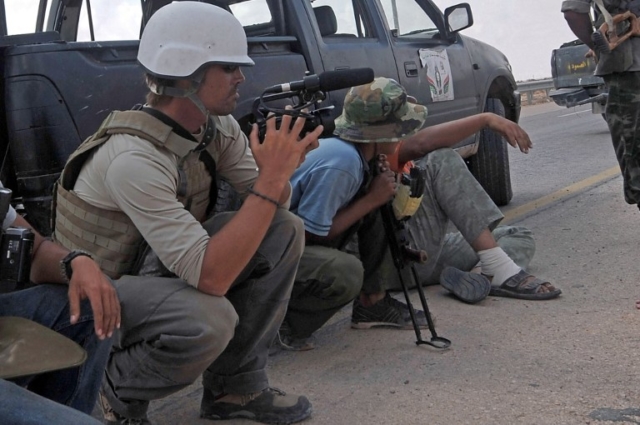As the parents of journalist Jim Foley struggle to cope with the brutal slaying of their son, hundreds of others continue to put their lives at risk, reporting from conflict zones around the world. What challenges do they face, and why do they do it?
For many of us, watching or reading the news is a rather simple exercise. We simply turn on or click our chosen device. Likely far from our thoughts is what it takes to bring that information to us on a daily basis — even when the news comes from various conflict zones around the world.
But journalists like Jim Foley put their lives on the line every day, every hour, every minute to bring us that information. And when they are brutally murdered, as Jim was earlier this week, we’re reminded of the courage and dedication it takes. According to the Committee to Protect Journalists since 2000, 741 journalists have been killed and another 2012 imprisoned for doing their jobs. Iraq, the Philippines and Syria are the deadliest countries.
We talked with our own journalists in two current conflict zones, from Iraq CCTV’s Sean Callebs and from Ukraine, Kate Parkinson.

In three decades of assignments covering world conflict, Mike Boettcher has witnessed, investigated, and been a victim of terrorism. He was kidnapped and threatened with execution in El Salvador in 1985. And 20 years later, he survived a suicide bomber attack and a roadside bombing in Baghdad. He joined us from Oklahoma City.
Courtney Radsch is the Advocacy Director for the Committee to Protect Journalists. Asra Nomani is an author, journalist and activist, and was also a close friend of journalist Daniel Pearl who in 2002 was brutally murdered by al-Qaeda in Pakistan.

2nd Segment

 CGTN America
CGTN America File picture taken on Sept. 29, 2011 shows U.S. freelance reporter James Foley on the highway between the airport and the West Gate of Sirte, Libya. Photo: AFP/ARIS MESSINIS
File picture taken on Sept. 29, 2011 shows U.S. freelance reporter James Foley on the highway between the airport and the West Gate of Sirte, Libya. Photo: AFP/ARIS MESSINIS
